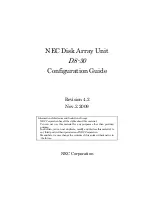
the capacity values shown might have a margin of error due to unit conversion reasons. If you
need to know the exact LDEV capacity, select
block
as the capacity unit.
•
The resulting entire capacity is expressed in blocks. To convert the resulting entire capacity
into megabytes, divide this capacity by 2,048:
Management area capacity of an open-systems volume
Management area capacity (KB)
Emulation type
None
OPEN-V
5,760
OPEN-3
19,440
OPEN-8
19,440
OPEN-9
13,680
OPEN-E
Boundary values for RAID levels
Boundary values of external volumes are always one slot, regardless of RAID levels.
Boundary value (KB)
Emulation type*
RAID 6
(14D+2P)
RAID 6 (6D+2P)
RAID 5 (7D+1P)
RAID 5 (3D+1P)
RAID 1 (2D+2D)
-
2,304
2,688
1,152
768
OPEN-xx (except for
OPEN-V)
7,168
3,072
3,584
1,536
1,024
OPEN-V
Notes:
•
xx indicates one or more numbers or letters.
•
Boundary values are expressed in kilobytes.
•
Boundary values of external volumes are always one kilobyte, regardless of RAID levels.
•
Hyphen (-) indicates that the combination is not supported.
Capacity of a slot
Capacity (KB) of a slot
Emulation type
48
OPEN-xx (except for OPEN-V)
Notes:
•
xx indicates one or more numbers or letters.
•
Slot capacity is expressed in kilobytes.
Configuring volumes in a parity group
For RAID 5 (7D+1P), RAID 6 (6D+2P), or RAID 6 (14D+2P) a maximum of 2,048 fixed-size volumes
(FVs) and a certain amount of free space are available in one parity group. For other RAID levels,
a maximum of 1,024 FVs and a certain amount of free space are available in one parity group.
Each parity group has the same configuration, and is assigned the same FVs of the same size and
RAID level.
The Virtual LUN functions of Delete LDEVs and Create LDEVs are performed on each parity group.
Parity groups are also separated from each other by boundary limitations. Therefore, you cannot
define a volume across two or more parity groups beyond these boundaries.
Virtual LUN size calculations
49
















































